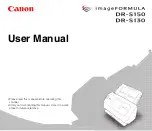
81
MPS4232
Section 6: Maintenance
Calibration & Validation Overview
The MPS4200 uses stable, temperature compensated
piezoelectric pressures sensors. The use of these sensors in
the new design, along with the ability to perform frequent,
online zero-offset calibrations (
), allow the MPS4200
to hold published accuracy for up to 6 months. Scanivalve
recommends performing a validations on MPS4200s using
a high-accuracy pressure standard on a 6 month interval,
and calibrating when required. Reports generated by the
validation process are stored in the MPS’s memory.
Every MPS4200 module is calibrated from the factory over
a series of 15 temperatures between 0° and 70°C. At each
temperature, 25 pressures are applied. This calibration
creates a matrix of discrete temperatures and pressures,
called the master calibration coefficients. The MPS4200
converts these points into a polynomial, least-squares fit.
After calibration coefficients are created, a multi-tempera
-
ture validation is performed over 3 temperatures from 10°
to 60°C, applying 15 different pressures at each tempera
-
ture.
Automated calibrations and validations require a Scanivalve
SPC4000 or SPC4050 calibrator. Manual calibrations and
validations can be performed using a non-Scanivalve cali
-
brator. Performing a manual calibration requires user input,
and manual application of pressures instructed by MPS.
All Calibration and Validation processes are handled
internally, requiring no additional software on the host
computer. The MPS4200 allows for single or multi-unit cali
-
bration and validations. Mutli-unit calibration or validations
are controlled using a single MPS4200 device. Once this is
configured properly, a calibration, validation, or calibration-
validation can be performed on multiple units, using a
single module as the master controller.
There are two calibration/validation types that can be
performed in the MPS: Full Calibration and Validation, and
Field Calibration and Validation.
Full Calibration & validation
A full calibration deletes all stored calibration coefficients
and applies known pressures over a series of temperatures
(as described in the previous section), followed by a multi-
temperature validation. This duplicates what is performed
at the factory during the module’s original manufacture
and calibration. Full calibration and validation requires an
Ethernet controllable environmental chamber capable of
reaching the entire 0°C and 70°C range, and a suitable,
high-accuracy pressure standard. It is recommended that
for full calibrations, the module be returned to Scanivalve
or a certified Scanivalve Representative.
An automated full calibration/validation routine typically
takes 20 hours or more.
Field Calibration & validation
* Will be released in a future firmware update.
During a field calibration or validation, a series of pressures
are applied to the module at a single temperature. The
temperature of the module does not have to be controlled
to a specific temperature, and does not require an envi
-
ronmental chamber. The MPS4200 calculates a second set
of “field” coefficients at the current temperature of the
MPS, which is then used as a correction term across the
full coefficient table (0°-70°C). This technique is suitable for
maintaining module’s coefficients long-term in the field.
An automated field calibration/validation routine typically
takes less than an hour.
Field Calibration & Validation
Procedure
* Will be released in a future firmware update.
The following section is a guide for performing field calibra
-
tions and/or validations on one or more MPS4200 modules.
If there are any questions or concerns, please contact
Scanivalve TechSupport.
Setup and Configuration
1. Connect power and Ethernet connections to each
MPS module that will be calibrated or validated.
Modules should be allowed one or more hours of
warm-up time before a calibration or validation is
performed.
2.
Connect to each MPS module using ScanTel or similar,
and set the following configurations:
SET MCAST <unique multicast address>
<ENTER>
SET IPCAL <IP address of the calibrator> <port of cali
<ENTER>
SET FCAL <number of calibration points> <min cal pres
-
sure> <max cal pressure>
<ENTER>
SET FVAL <number of validation points> <min val pres
<ENTER>
• Recommended settings can be found in later in this
section, under Table 6-1.
• If a manual calibrator is to be used, ignore the IPCAL
variable.
• Each device that will be calibrated or validated must
be configured the same, unless there are different
Summary of Contents for MPS4232
Page 1: ...MPS4232 Miniature Pressure Scanner Hardware and Software Manual Software Version 1 00...
Page 2: ......
Page 3: ......
Page 6: ...INTENTIONALLY LEFT BLANK...
Page 12: ...6 MPS4232 Section 1 Specifications INTENTIONALLY LEFT BLANK...
Page 15: ...9 MPS4232 Section 1 Introduction Section 1 Specifications MPS4232 INTENTIONALLY LEFT BLANK...
Page 18: ...12 MPS4232 Section 2 Introduction INTENTIONALLY LEFT BLANK...
Page 33: ...27 MPS4232 Section 4 Hardware INTENTIONALLY LEFT BLANK...
Page 37: ...31 MPS4232 Section 5 Software INTENTIONALLY LEFT BLANK...
Page 51: ...45 MPS4232 Section 5 Software...
Page 81: ...75 MPS4232 Section 6 Maintenance INTENTIONALLY LEFT BLANK...
Page 90: ...84 MPS4232 Appendix INTENTIONALLY LEFT BLANK...
Page 94: ...88 MPS4232 Appendix D Software Revision Log Version 1 00 Initial Release...










































